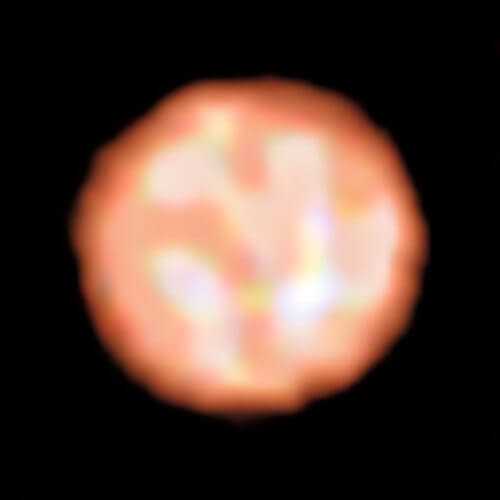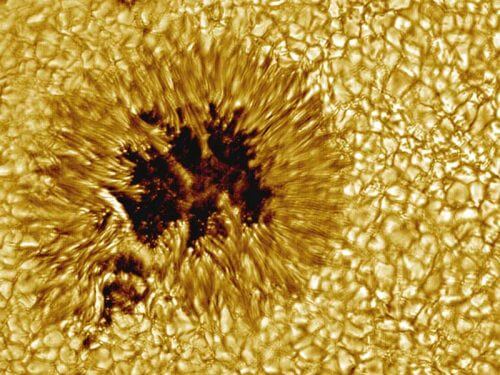Astronomers using the "Very Large Telescope" managed to reveal the "bubbling" face of the red giant π1 Gruis: The contours visible on it are heat convection cells of hot plasma, which arises from the depths of the star, cools and sinks back. This is the first time the phenomenon has been directly recorded on a planet other than our Sun.

An international team of astronomers managed to photograph the face of the red giant in unprecedented detail π1 Grit (pie1 Bagor), which is 530 light-years away from us, in the constellation Agor.
The new image of the star reveals for the first time, directly, a phenomenon of heat transfer cells (convection) in a star other than our Sun. In these cells, hot plasma from the depths of the star rises to its surface (The photosphere), cools down and returns down. The phenomenon is called "granulation" (granulation, from the word "grain"), since in our sun there are about 2 million such cells, with a typical size of about 1,500 km, which give it a rough appearance.
The observation was carried out using an array of the four auxiliary telescopes of "The very large telescope(Very Large Telescope) of the European Southern Observatory (ESO), in the Atacama Desert in Chile. To strengthen their capabilities, the research team used the device PIONEER, which combines the light received from the separate telescopes into a single light beam. The method, which is called Astronomical interformatry, significantly strengthens the The angular separation capability of the array of telescopes in relation to their separate capabilities, allowing for a sharper image.
Watch - "zoom in" on the red giant π1 Gruis:
According to the new study, Published In the journal Nature, the heat convection cells of π1 Gruis are very different from those of the sun. The red giant has very few heat convection cells (while the sun has, as mentioned, about 2 million), but each of them reaches enormous sizes of about 120 million kilometers - about a quarter of the star's diameter. If further illustration of the astronomical size in question is needed, one such convection cell could stretch from our sun to the planet Venus.
The diameter of π1 Gruis is indeed 350 times larger than the Sun, but its mass is only 1.5 solar masses - this is due to it being an aging star at the end of its life, which swelled and becamered giant. According to the researchers, the size of the apple explains the large difference in the size and number of heat transfer cells between it and the sun. Since the material in the outer part of the red giant is very far from its center, the gravitational force on its surface is much weaker than that of our Sun, which leads to a very low number of extremely large heat convection cells. This difference between the sun and red giants It was predicted many years ago, and now we will observe directly.
As is expected to happen to our sun in about 5 billion years, the star became a red giant after consuming the hydrogen reservoir in its core, which it fused into helium. The star then collapsed in on itself due to its strong gravity, which until then was moderated by the intense counterforce created by the thermonuclear explosions in its core. The self-collapse produced an enormous heat of over 100 million degrees Celsius, and the star began to fuse the helium into heavier elements, such as oxygen and carbon, in a process that caused it to swell on the outside and grow to its enormous dimensions.

Compared to more massive stars, which end their lives in a massive explosion known assupernova, the aging star will shed its outer shell at the end of its life which will becomeplanetary nebula, while its core will becomewhite dwarf which no longer performs nuclear fusion in its core, and will cool over time.
Previous observations made on π1 Gruis points out that the red giant has actually already begun to shed its outer shell. The observations showed a shell of material 0.9 light-years away from the red giant, and researchers believe it was ejected from the star about 20,000 years ago. as per The press release from the ESO organization: "This relatively short period of time in the life of a star lasts only a few tens of thousands of years - compared to the total lifetime - and these [new] observations reveal a new method to study this disappearing red giant."
More of the topic in Hayadan:
